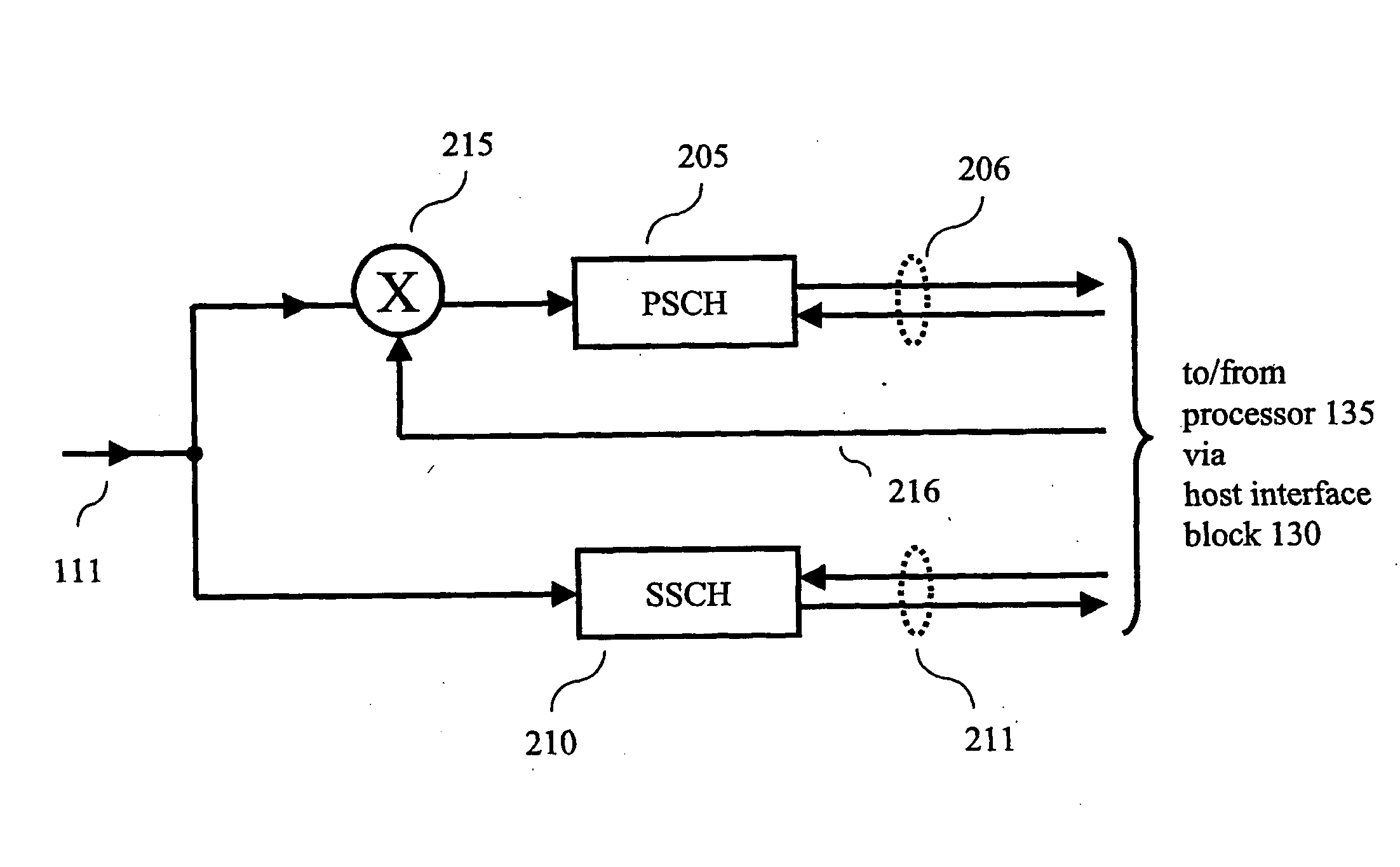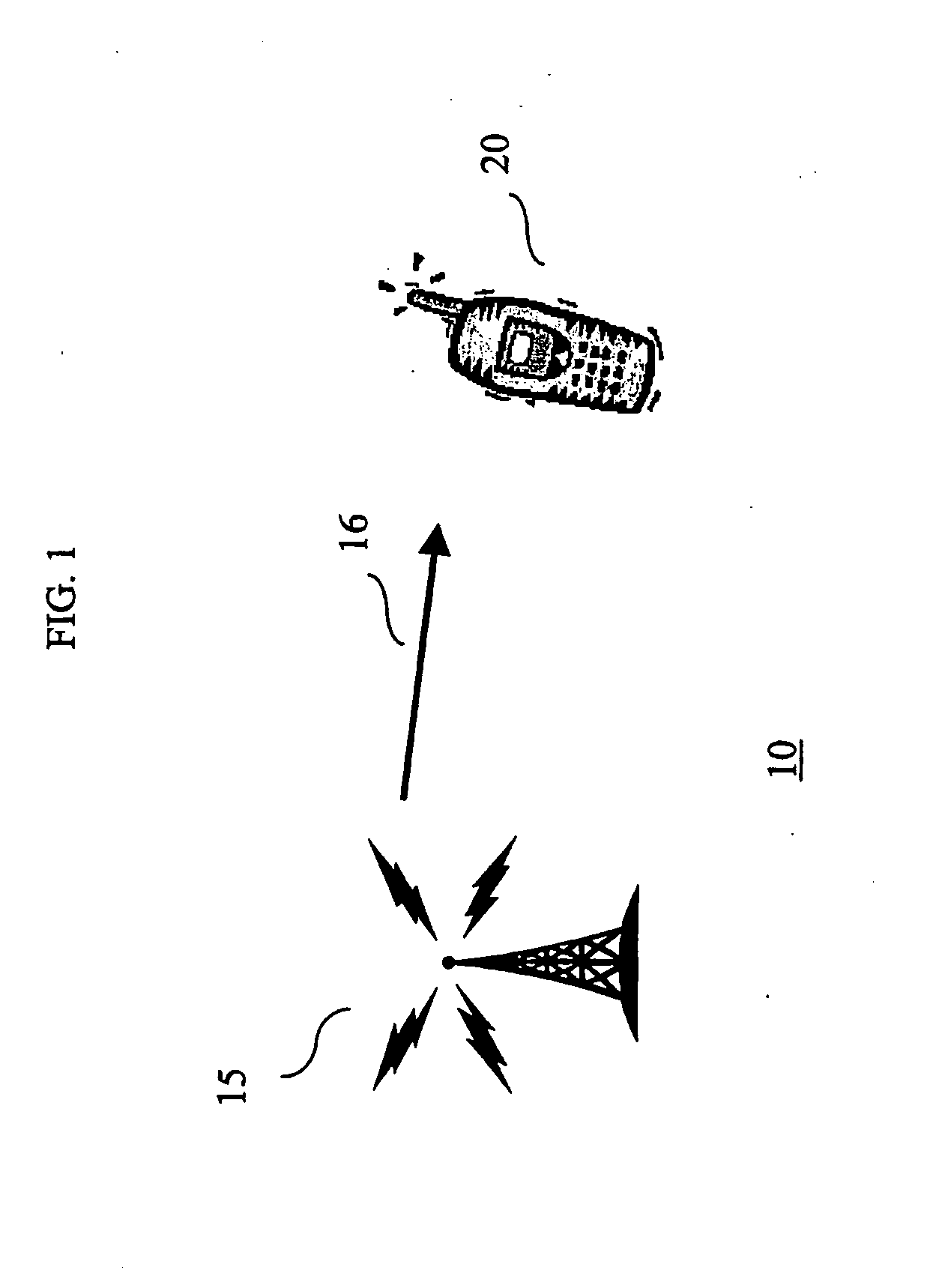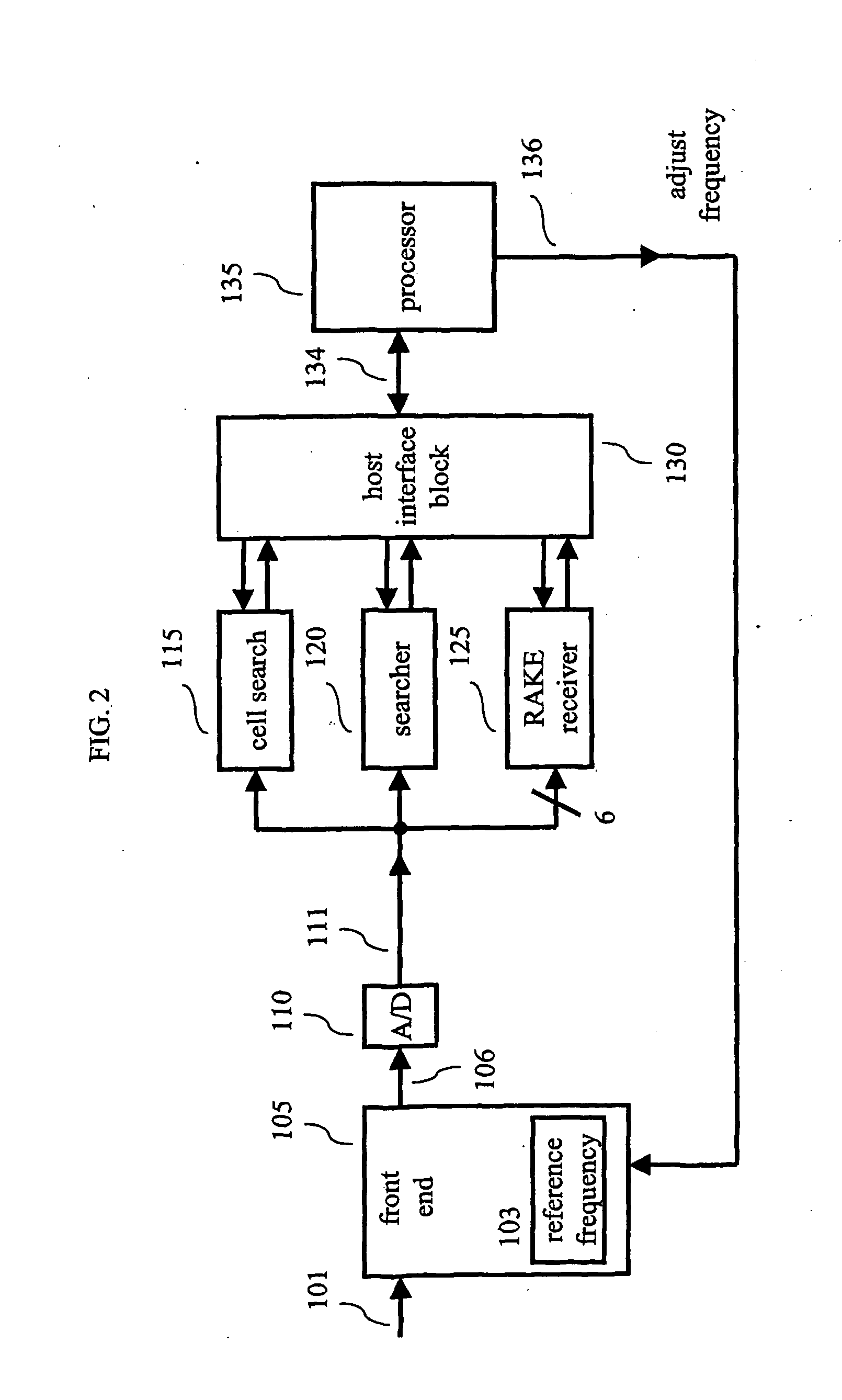Frequency Synchronization During Cell Search in a Universal Mobile Telephone System Receiver
a universal mobile telephone system and receiver technology, applied in the direction of synchronisation signal speed/phase control, multiplex communication, digital transmission, etc., can solve the problems of reducing the processing performance of ssch during cell search, the above-described cell search process has some drawbacks, and the umts receiver cannot achieve frequency synchronization, so as to reduce the effect of frequency offset on the process of frame synchronization
- Summary
- Abstract
- Description
- Claims
- Application Information
AI Technical Summary
Benefits of technology
Problems solved by technology
Method used
Image
Examples
Embodiment Construction
[0013]Other than the inventive concept, the elements shown in the figures are well known and will not be described in detail. Also, familiarity with UMTS-based wireless communications systems is assumed and is not described in detail herein. For example, other than the inventive concept, spread spectrum transmission and reception, cells (base stations), user equipment (UE), downlink channels, uplink channels and RAKE receivers are well known and not described herein. In addition, the inventive concept may be implemented using conventional programming techniques, which, as such, will not be described herein. Finally, like-numbers on the figures represent similar elements.
[0014]An illustrative portion of a UMTS wireless communications system 10 in accordance with the principles of the invention is shown in FIG. 1. Cell (or base station) 15 broadcasts a downlink synchronization channel (SCH) signal 16 including the above-mentioned PSCH and SSCH subchannels. As noted earlier, the SCH si...
PUM
 Login to View More
Login to View More Abstract
Description
Claims
Application Information
 Login to View More
Login to View More - R&D
- Intellectual Property
- Life Sciences
- Materials
- Tech Scout
- Unparalleled Data Quality
- Higher Quality Content
- 60% Fewer Hallucinations
Browse by: Latest US Patents, China's latest patents, Technical Efficacy Thesaurus, Application Domain, Technology Topic, Popular Technical Reports.
© 2025 PatSnap. All rights reserved.Legal|Privacy policy|Modern Slavery Act Transparency Statement|Sitemap|About US| Contact US: help@patsnap.com



